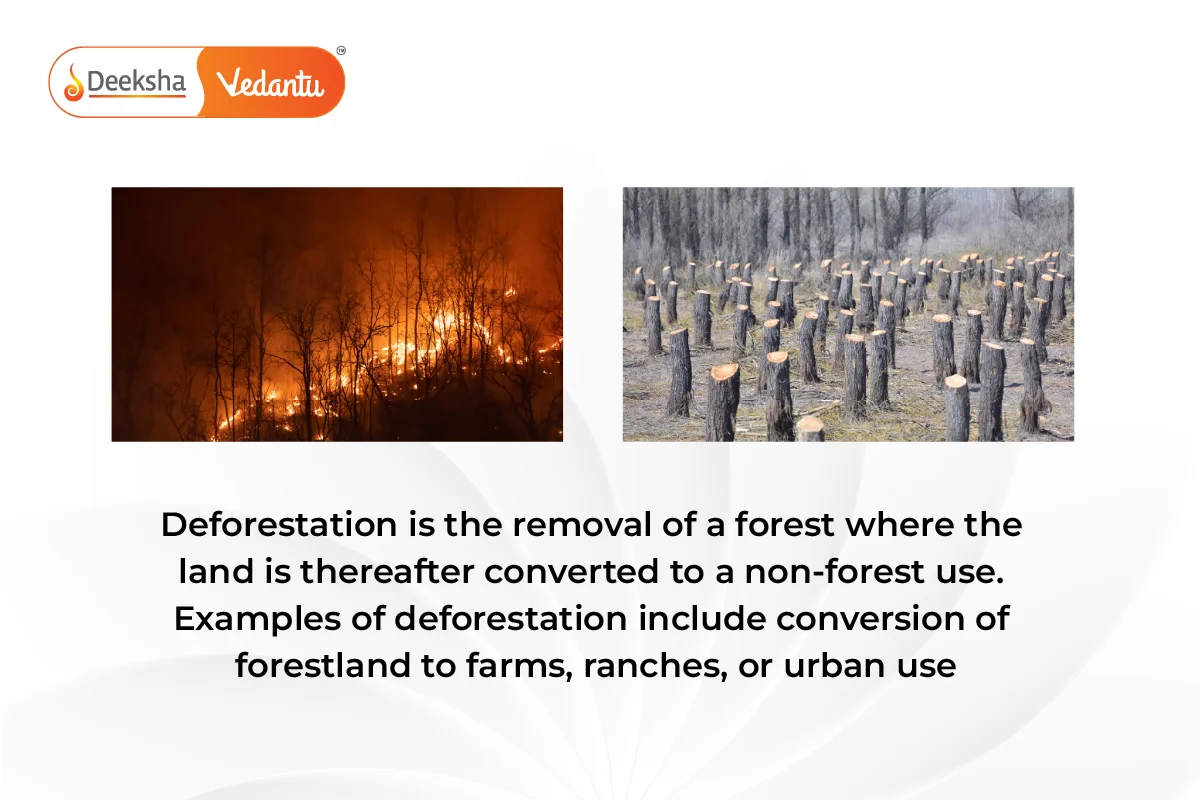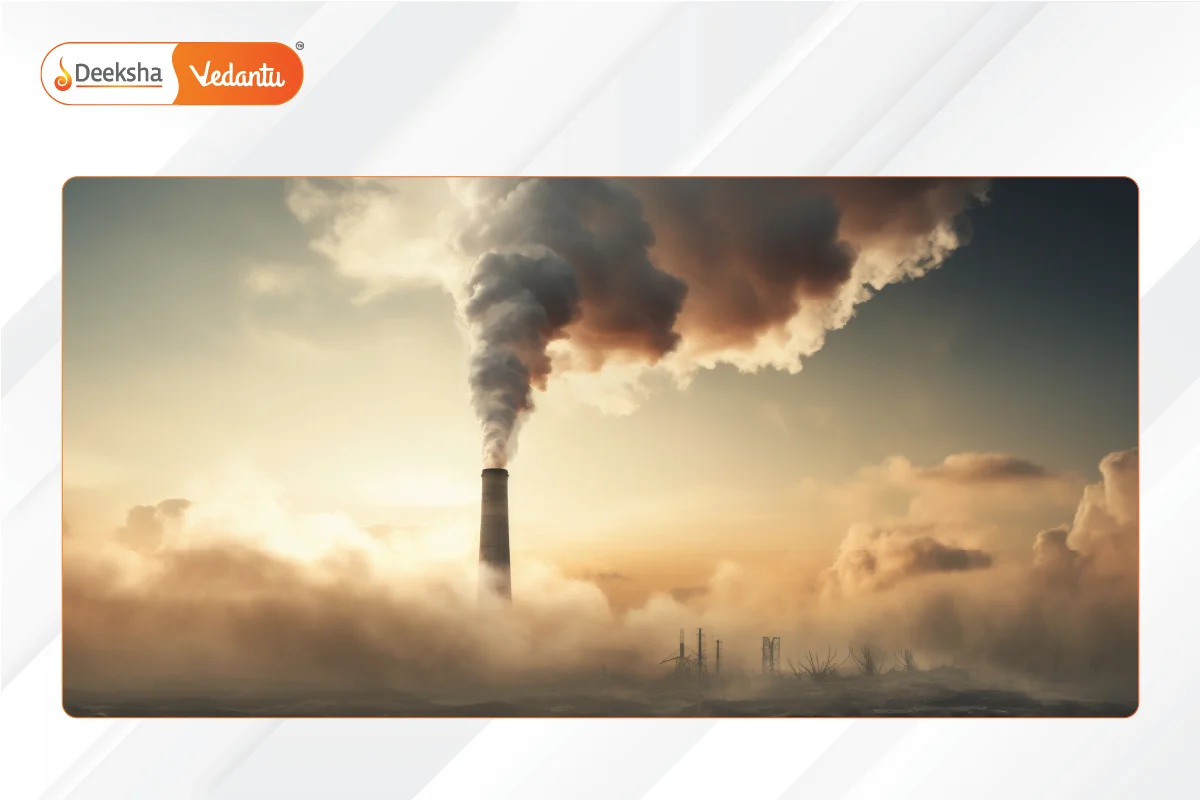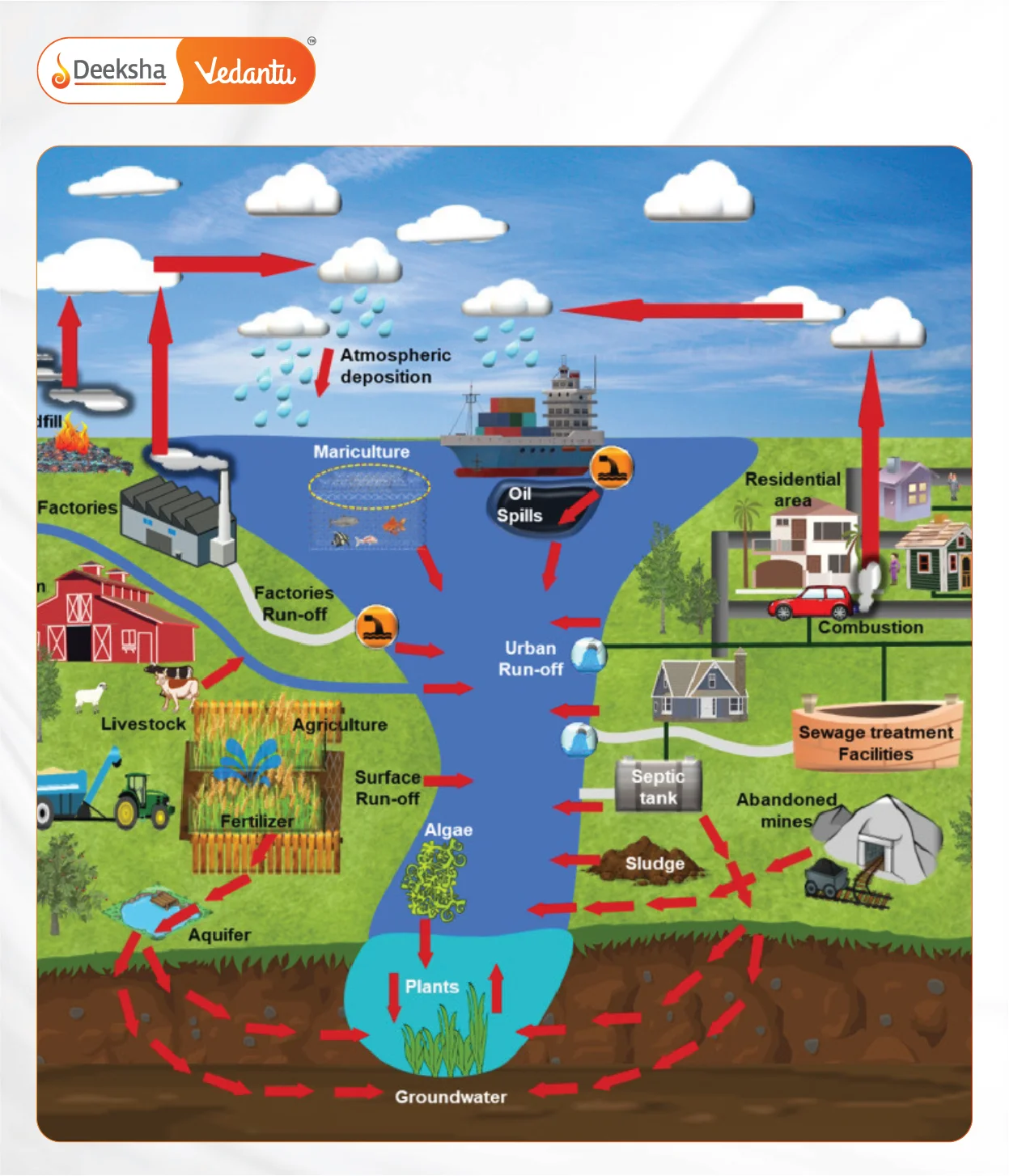Introduction
Human activities, especially in the past few centuries, have had significant impacts on the environment. Industrialization, urbanization, deforestation, and the increased use of fossil fuels have disrupted the natural processes of ecosystems, leading to environmental degradation. These activities affect the air, water, soil, and biodiversity and contribute to major global challenges like climate change, pollution, and depletion of natural resources.
Understanding how our actions impact the environment is crucial to finding ways to mitigate these negative effects and adopt more sustainable practices.
Major Human Activities Affecting the Environment
Deforestation
Deforestation refers to the large-scale cutting down of forests for agricultural, industrial, or urban development purposes. Forests play a critical role in maintaining ecological balance by absorbing carbon dioxide, releasing oxygen, and supporting biodiversity.

Impact of Deforestation:
- Loss of Biodiversity: Forests are home to a wide range of plant and animal species. Deforestation leads to the destruction of habitats, which results in the extinction of species.
- Climate Change: Trees absorb carbon dioxide, a greenhouse gas, during photosynthesis. When trees are cut down, this carbon is released back into the atmosphere, contributing to global warming and climate change.
- Soil Erosion: Tree roots hold soil together. When forests are cleared, the soil becomes loose, increasing the risk of soil erosion, which degrades land fertility and affects agriculture.
Example:
The Amazon Rainforest, often referred to as the “lungs of the Earth,” is rapidly shrinking due to deforestation, affecting global weather patterns and biodiversity.
Air Pollution


Air pollution occurs when harmful substances such as carbon dioxide (CO2), carbon monoxide (CO), sulfur dioxide (SO2), nitrogen oxides (NOx), and particulate matter are released into the atmosphere, primarily due to industrial activities, vehicle emissions, and the burning of fossil fuels.
Impact of Air Pollution:
- Health Problems: Air pollution can cause respiratory issues such as asthma, bronchitis, and lung cancer. Long-term exposure to polluted air can also affect the heart and lead to premature death.
- Acid Rain: Pollutants like sulfur dioxide and nitrogen oxides react with water vapor in the atmosphere to form acids, which then fall as acid rain. Acid rain damages buildings, soil, and aquatic ecosystems.
- Global Warming: Greenhouse gases like carbon dioxide trap heat in the Earth’s atmosphere, leading to the phenomenon of global warming, which causes rising temperatures, melting ice caps, and rising sea levels.
Example:
Cities like Delhi and Beijing experience severe air pollution, with smog and harmful particulate matter affecting millions of people’s health and causing respiratory issues.
Water Pollution

Impact of Water Pollution:
- Harm to Aquatic Life: Pollutants like chemicals, plastic, and heavy metals can harm or kill fish and other aquatic organisms. Oil spills are particularly devastating for marine ecosystems.
- Health Hazards: Contaminated water can spread diseases like cholera, dysentery, and typhoid when consumed by humans or animals.
- Eutrophication: Excessive nutrients from agricultural runoff (mainly nitrogen and phosphorus) can lead to the overgrowth of algae in water bodies, a process called eutrophication. This reduces oxygen levels in the water, suffocating aquatic life.

Example:
The Ganges River in India is heavily polluted by untreated sewage and industrial waste, posing a significant health risk to millions of people who rely on it for drinking water, bathing, and fishing.
Soil Pollution

Soil pollution occurs when harmful chemicals, pesticides, heavy metals, or waste materials are introduced into the soil. It degrades the quality of the soil, making it unsuitable for plant growth and reducing agricultural productivity.
Impact of Soil Pollution:
- Reduced Crop Yields: Soil contaminated with harmful chemicals or heavy metals becomes less fertile, leading to lower agricultural yields.
- Groundwater Contamination: Pollutants in the soil can seep into groundwater, contaminating it and making it unsafe for human consumption.
Health Risks: Harmful chemicals in the soil can enter the food chain, affecting plants, animals, and humans who consume them.

Example:
Excessive use of chemical fertilizers and pesticides in agricultural fields can lead to soil degradation, reducing crop productivity and contaminating nearby water bodies.
Climate Change
Climate change refers to long-term changes in temperature, precipitation patterns, and other climate variables caused by human activities, particularly the emission of greenhouse gases from burning fossil fuels, deforestation, and industrial activities.
Impact of Climate Change:
- Global Warming: The Earth’s average temperature is rising, leading to more frequent and severe heatwaves, droughts, and storms.
- Melting Polar Ice Caps: Rising temperatures are causing the polar ice caps and glaciers to melt, leading to rising sea levels and threatening coastal communities with flooding.
- Loss of Biodiversity: Changing climates affect the habitats of many species, leading to shifts in populations, migration patterns, and extinction.
Example:
The melting of glaciers in Greenland and Antarctica is contributing to the rise in sea levels, threatening coastal cities like Miami and island nations like the Maldives.
Waste Generation and Its Impact
Human activities generate enormous amounts of waste, much of which is non-biodegradable, such as plastic, electronic waste, and chemical waste. Improper disposal of this waste leads to pollution and harms both terrestrial and aquatic ecosystems.
Impact of Improper Waste Disposal:
- Landfills: Non-biodegradable waste accumulates in landfills, releasing harmful gases like methane, which contributes to global warming.
- Ocean Pollution: Plastic waste often ends up in oceans, harming marine life. For example, animals like sea turtles mistake plastic bags for food and ingest them, which can be fatal.
- Electronic Waste (E-Waste): Discarded electronics contain toxic substances like lead and mercury, which can seep into the soil and water, causing environmental harm.
Biological Magnification
Biological magnification refers to the process by which harmful chemicals, such as pesticides and heavy metals, accumulate in organisms at each trophic level of a food chain. These toxins become more concentrated as they move up the food chain, posing serious risks to top predators and humans.
Example:
- Pesticides used in agriculture can enter water bodies, where they are absorbed by aquatic plants. Small fish that eat these plants accumulate the toxins, and larger fish that eat the smaller fish accumulate even more. Humans, as top predators, consume the highest concentration of these toxins, leading to health risks.
Practice Questions
Q1: Explain the effects of deforestation on the environment.
- Answer: Deforestation causes the loss of biodiversity, increases carbon dioxide levels in the atmosphere, contributes to global warming, and leads to soil erosion.
Q2: What are the harmful effects of water pollution on aquatic ecosystems?
- Answer: Water pollution can harm or kill aquatic life, spread diseases, and cause eutrophication, which reduces oxygen levels in water bodies, leading to the death of fish and other aquatic organisms.
Q3: Describe how human activities contribute to climate change.
- Answer: Human activities like burning fossil fuels, deforestation, and industrial processes release greenhouse gases (e.g., carbon dioxide and methane) into the atmosphere, leading to global warming and climate change.
Q4: What is the impact of plastic waste on marine life?
- Answer: Plastic waste in oceans harms marine life. Animals like turtles and fish ingest plastic, mistaking it for food, which can lead to death. Plastic waste also disrupts marine ecosystems and pollutes the water.
FAQs
Climate change alters habitats and ecosystems, forcing species to migrate or adapt. Many species may not survive these changes, leading to a loss of biodiversity and the extinction of certain species.
Biological magnification is the process by which harmful chemicals accumulate in organisms at higher trophic levels in a food chain. It is harmful because top predators, including humans, consume high concentrations of toxins, which can cause serious health problems.
Air pollution releases greenhouse gases like carbon dioxide into the atmosphere, which trap heat and cause global warming. This leads to rising temperatures, melting glaciers, and sea level rise.
Deforestation is the large-scale cutting down of forests. It leads to the loss of biodiversity, contributes to climate change by releasing carbon dioxide, and causes soil erosion.







Get Social